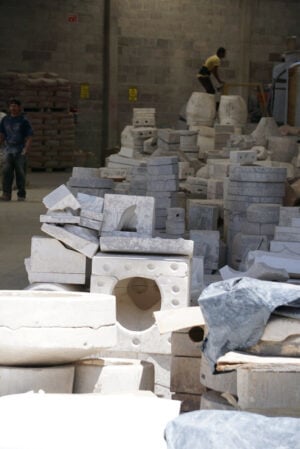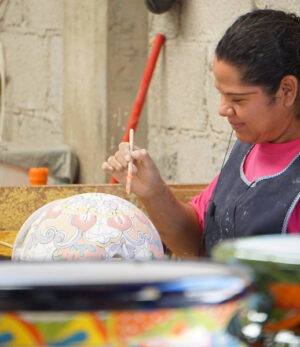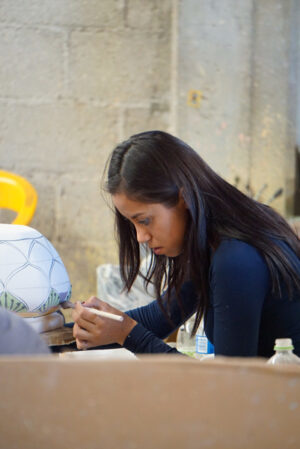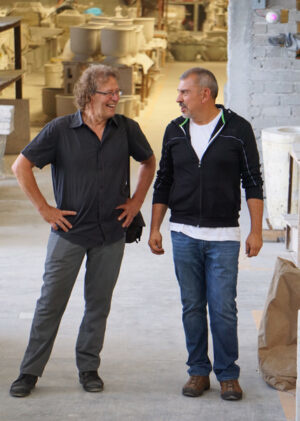Mexican Talavera: Travels from Afar
- Posted on
- By Zocalo

Quintessentially colourful and unique, Talavera pottery has coloured Zocalo's courtyard since it opened. Talavera ceramics are perfect additions to a quiet indoor corner or a unique garden or patio. What makes it so unusual? What distinguishes it from other types of pottery? Below, a little history of these bold art pieces. Named after the Spanish city of Talavera de la Reina, this uniquely Mexican ceramic has gained worldwide acclaim for its high quality and beauty. A blend of indigenous and European artistry, the history of Talavera is as colourful as its various patterns.
OLDEST FORMS
 The first forms of majolica-style ceramics can be traced to ancient Egypt and Mesopotamia, while a similar form of clay work was later adopted and perfected by the Chinese. In the 13th century, Spain was introduced to majolica-style ceramics via the Moorish invasion and subsequent occupation. As the Renaissance spread across Europe, the practice of creating majolica ceramics became more and more refined by Spanish artisans. During this time, in the region that would later become Mexico, clay work and pottery had been practiced for centuries. The Aztecs primarily used red and orange clays for their pottery, and employed primitive firing techniques. Their pottery was not only of practical use, but also served as religious art, often depicting gods or tribes within the culture. The style of Aztec pottery changed over time: from rigid geometric decoration to a more natural design with animal and floral patterns. Like the Aztecs, the Mayan empire also developed their various clays and ceramic arts. They sought out clays for their pottery in riverbeds and valleys and to reinforce their pottery, they worked ash, sand and small shards of rock into the clay to achieve proper consistency. Afterwards, the pottery was adorned with depictions of Mayan rituals, games and death.
The first forms of majolica-style ceramics can be traced to ancient Egypt and Mesopotamia, while a similar form of clay work was later adopted and perfected by the Chinese. In the 13th century, Spain was introduced to majolica-style ceramics via the Moorish invasion and subsequent occupation. As the Renaissance spread across Europe, the practice of creating majolica ceramics became more and more refined by Spanish artisans. During this time, in the region that would later become Mexico, clay work and pottery had been practiced for centuries. The Aztecs primarily used red and orange clays for their pottery, and employed primitive firing techniques. Their pottery was not only of practical use, but also served as religious art, often depicting gods or tribes within the culture. The style of Aztec pottery changed over time: from rigid geometric decoration to a more natural design with animal and floral patterns. Like the Aztecs, the Mayan empire also developed their various clays and ceramic arts. They sought out clays for their pottery in riverbeds and valleys and to reinforce their pottery, they worked ash, sand and small shards of rock into the clay to achieve proper consistency. Afterwards, the pottery was adorned with depictions of Mayan rituals, games and death.
BIRTH OF MEXICAN TALAVERA
 Mexican Talavera, as it is known today, began in the 16th century. The Spanish colonization of Mexico brought new skills, ideas and inputs about creating ceramics. After founding the city of Puebla, Spanish monks and artisans from Talavera de la Reina began sharing new techniques with locals to enhance their pottery and ceramic skills. The introduction of the potter's wheel and the tin-glazing of majolica pottery, along with new colours and patterns, helped blend centuries of indigenous craftsmanship with the fine-tuned styles of European, Asian and Arab pottery and ceramics. Talavera pottery is generally used to make tiles, plates, bowls, jars, flowerpots, sinks, or decorative figures. Many buildings in the city of Puebla are tiled with Talavera tiles (Azulejos), giving it the nickname “The City of Tiles”.
Mexican Talavera, as it is known today, began in the 16th century. The Spanish colonization of Mexico brought new skills, ideas and inputs about creating ceramics. After founding the city of Puebla, Spanish monks and artisans from Talavera de la Reina began sharing new techniques with locals to enhance their pottery and ceramic skills. The introduction of the potter's wheel and the tin-glazing of majolica pottery, along with new colours and patterns, helped blend centuries of indigenous craftsmanship with the fine-tuned styles of European, Asian and Arab pottery and ceramics. Talavera pottery is generally used to make tiles, plates, bowls, jars, flowerpots, sinks, or decorative figures. Many buildings in the city of Puebla are tiled with Talavera tiles (Azulejos), giving it the nickname “The City of Tiles”.
PROPRIETARY PROCESS
 The process for making Talavera has remained the same since the 16th century, but the shaping and decorative aspects of the art have gone through changes. Two kinds of clay (a light and a dark) are mixed and kneaded together. The pottery is then turned on a wheel, molded by hand, or pressed in a mold, and then left out to dry. After drying for 50-90 days, the pottery is fired and hand-dipped in a glaze which gives the white background of the Talavera design.
The process for making Talavera has remained the same since the 16th century, but the shaping and decorative aspects of the art have gone through changes. Two kinds of clay (a light and a dark) are mixed and kneaded together. The pottery is then turned on a wheel, molded by hand, or pressed in a mold, and then left out to dry. After drying for 50-90 days, the pottery is fired and hand-dipped in a glaze which gives the white background of the Talavera design.
Traditionally, the colour blue was only used in the finest ceramics as the mineral pigments needed to produce the color were expensive. However, in the 1800s it became much more common to include other colors such as green, yellow, or mauve. Carefully monitored standards, regulations and rules by potters’ guilds were set to protect their trade secrets and preserve the quality of the product. Today, there are many differing views on “authentic” talavera, not unlike the “majolicas” of Europe. However one adjudicates these finer points, your Zocalo buyers travelled many long, hot days of dusty, dirt roads searching out the brightest and best quality painted Mexican talavera for you to enjoy. We hope this history-full artwork brings you colourful joy, from across centuries and continents of tradition, lore and fine craft.


